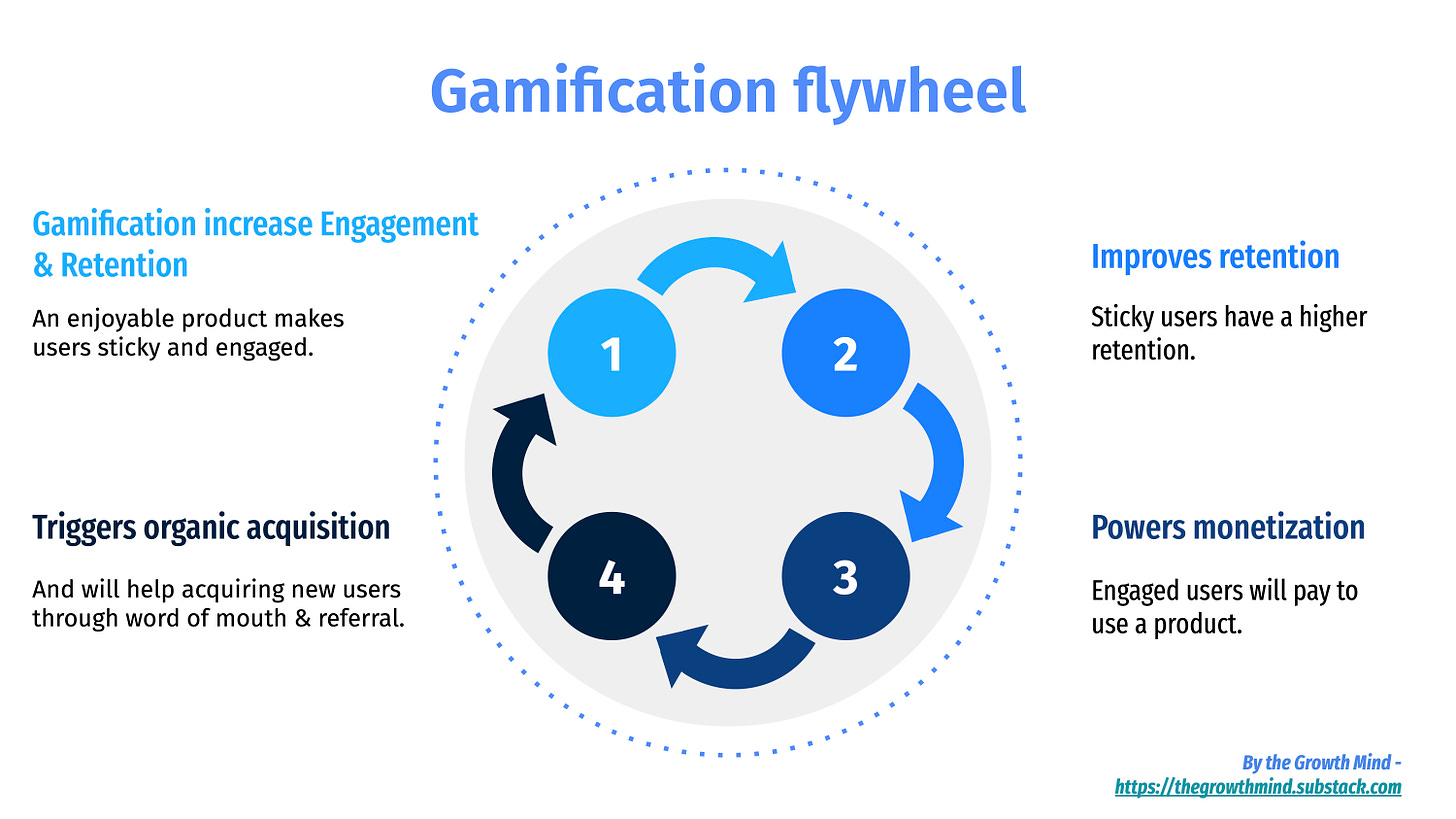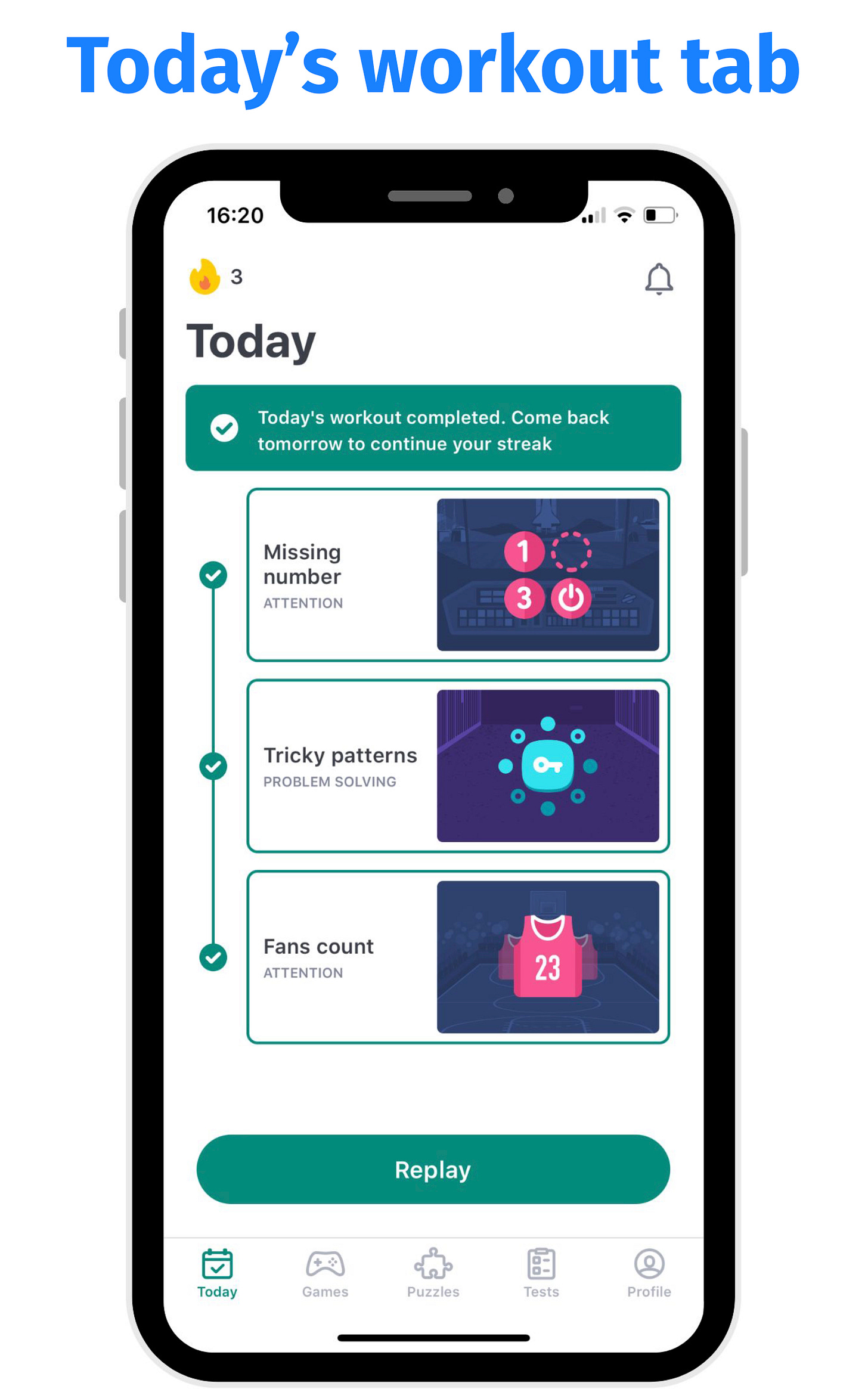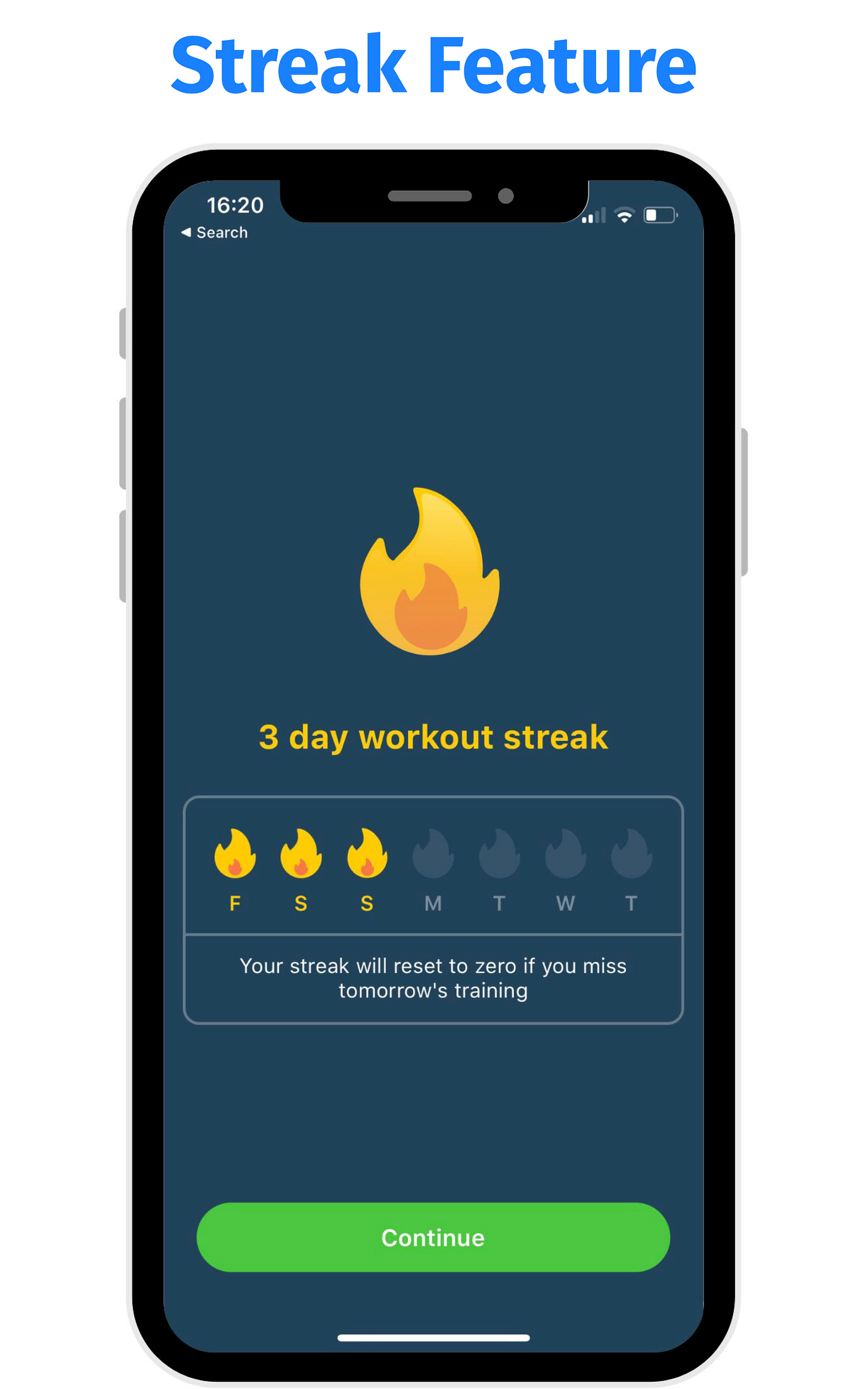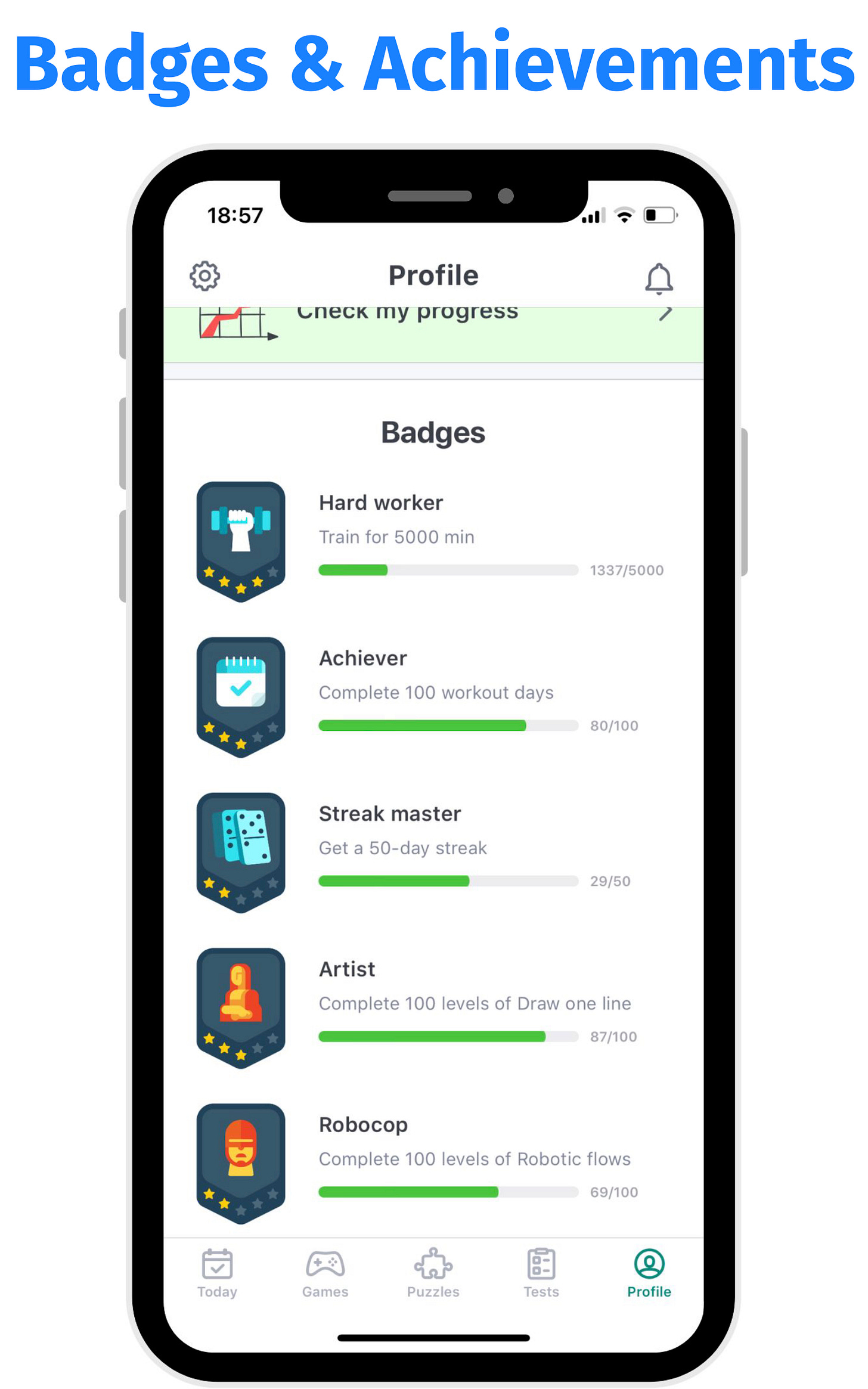Hi there, it’s Pierre-Jean. Welcome to this new edition of The Growth Mind!
Today, we’re talking about Gamification, one of my favorite Product Growth topics, through the case study of Impulse app.
What’s gamification?
Gamification is the integration of game dynamics into an app's user experience to make interactions enjoyable, compelling, and addictive.
A few examples of gamification tactics:
Points, Leaderboards and rankings
Challenges, Levels and Badges
Educational tutorials
Streaks
Apps like Duolingo or Strava are often mentioned as examples when talking about gamification.
But gamification tactics can be used by literally every product. No matter if it’s a B2C or B2B product.
Gamification has several benefits:
Increased Engagement and Retention: Gamification motivates users to interact with the app more frequently and for longer durations. The desire to climb the leaderboard, earn badges, or maintain streaks keeps users coming back.
Pride in Achievements: Badges and rewards are a testament to the user's efforts and achievements, fostering a sense of pride and accomplishment.
Incentive to Return: The anticipation of earning rewards or leveling up creates a strong motivation for users to return. Fearing to lose a streak has a strong power.
An improved engagement and retention trigger a much larger Gamification Flywheel, having effects on the whole business:
How Impulse leverage gamification to boost Engagement and Retention?
I recently discovered Impulse, a mobile app to train your brain, featured by Apple as App of the Day in 30+ countries.
They propose a bunch of games and exercises to educate your brain on a daily basis, sorted by categories like “Memory”, “Mental Maths” or “Problem Solving”.
Released in 2019, Paywallscreens estimates Impulse generates:
2M downloads per month, with a total 40M user base.
2M$ of revenue per month
I was targeted by an Instagram ad a few months ago and decided to give Impulse a try. The first thing I noticed after starting my trial? They’re super good at driving engagement through gamification. Let’s go through it.
The main tab of the app is the “Today’s workout” one. A series of 3 exercises, changing every day, to complete on a daily basis.
Completing those exercises is what makes you create a “Streak”.
Interesting fact: a few days ago, it was 5 exercises per day to complete. Maybe I’m part of an A/B test or it’s a new version rolled out to the entire user base.
But my guess is that they try to make it easier to create a long streak, by having fewer exercises to complete.
The streak feature is a beast at making users sticky. They have, every day, a reason to come back to the app.
The longer the streak is, the more a user will be afraid of losing it, creating a positive engagement curve.
Impulse is pretty good at using achievements, making users proud of their progress.
Every time you unlock them, a small pop-up appears in the app to show it. You can also find all your badges in your profile section.
After every game played, users see:
Their score progression over time
How they compare with others
It triggers two potential feelings:
If you’re below the others, you’ll likely want to get better.
If you’re already good at a game, you’ll likely want to keep this level.
In both cases, it motivates you to continue playing.
Users can also access a detailed ranking tab, which shows the average ranking per category of games.
To make sure people don’t forget to complete their daily games, Impulse implemented daily push notifications. Depending on your behavior, you receive one to two push notifications every day. This is the kind of trigger that will remind users they have something to achieve with your product.
Impulse has managed to create a solid gamification scheme, that’s surely helping them in achieving millions of downloads per month. It’s a great inspiration for every product who wants to become better at mastering gamification.
That’s all for today’s edition. See you in 2 weeks for the next one 👋








